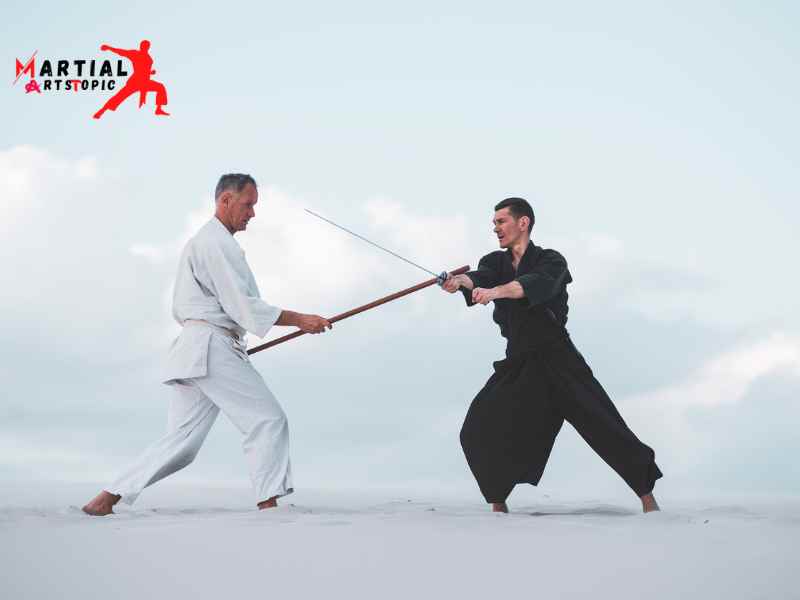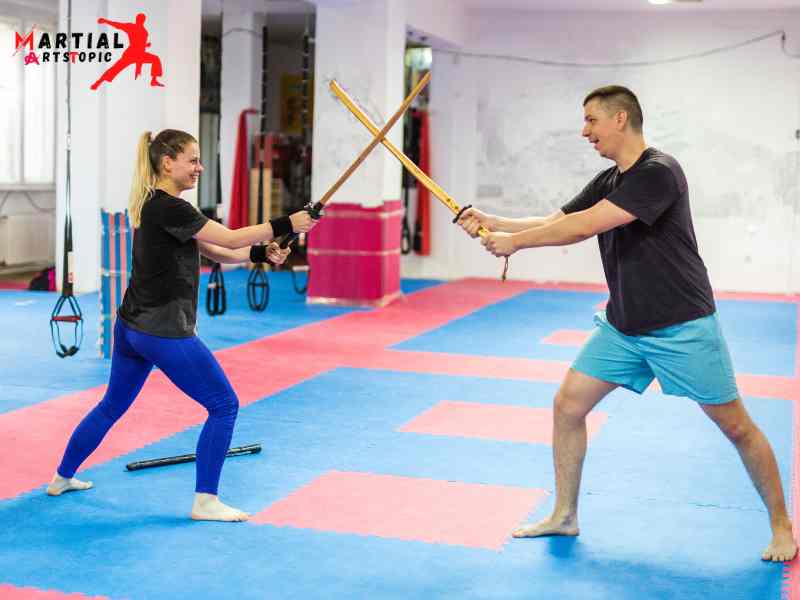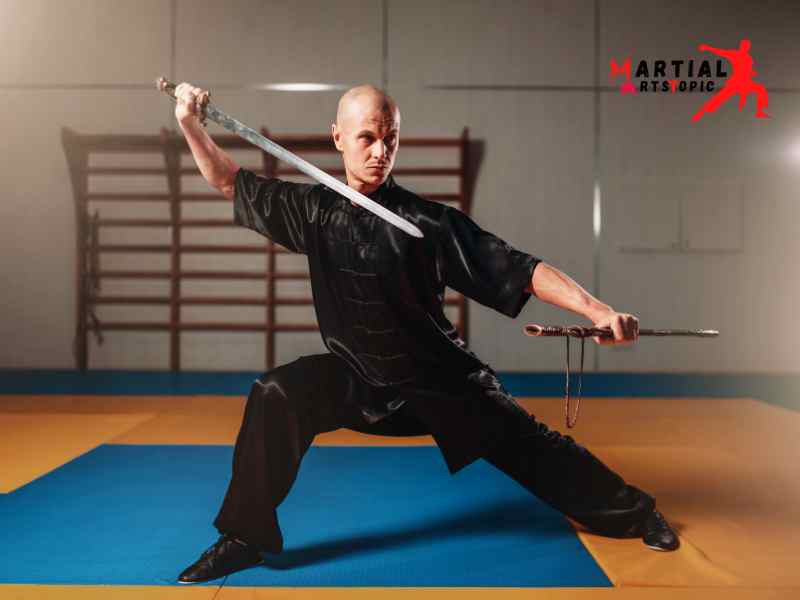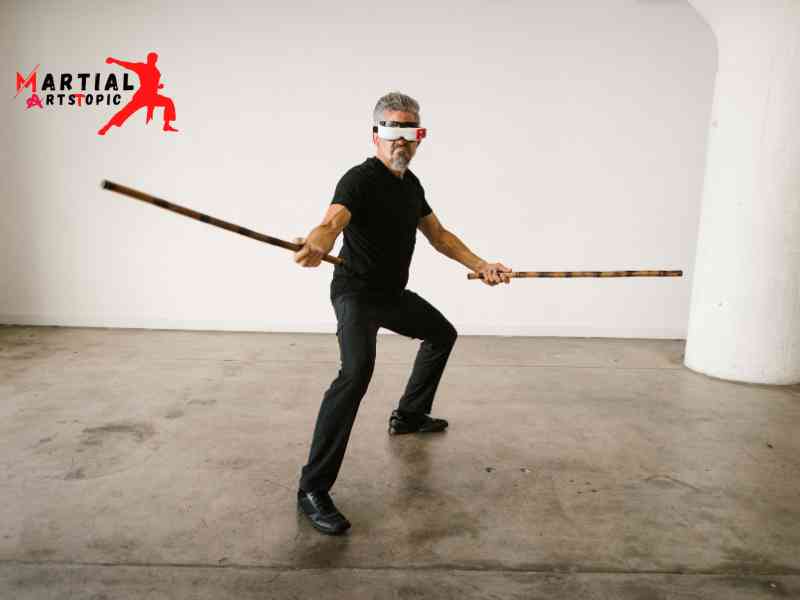
Samurai Martial Arts in Japanese Culture
What is Samurai Martial Arts? Samurai Martial Arts in Japanese CultureThe samurai, renowned warriors of ancient Japan, are a fascinating subject of study and admiration. Their commitment to martial arts, discipline, and honor has left an indelible mark on Japanese culture and the world at large.
The practice of martial arts was an essential part of the samurai’s way of life, encompassing various disciplines such as kenjutsu (swordsmanship), kyujutsu (archery), and bujutsu (martial arts). These skills were not only instrumental in warfare but also served as a means of personal development and spiritual growth.
The ethos of the samurai, known as bushido, emphasized virtues such as loyalty, integrity, and self-discipline. This code of conduct permeated every aspect of a samurai’s life, including their approach to martial arts. It was not simply about physical prowess, but also about cultivating a sound mind and unwavering spirit.
One of the most iconic symbols of the samurai is the katana, a curved, single-edged sword that became synonymous with their martial prowess and honor. The art of wielding the katana, known as iaido, required precision, focus, and a deep understanding of timing and technique.

The bow and arrow held a significant place in the samurai’s arsenal, with kyujutsu being a revered martial art that demanded both physical and mental dexterity. The discipline and skill required to primary archery were emblematic of the samurai’s dedication to honing their abilities to the utmost.
The legacy of the samurai and their martial arts continues to captivate modern audiences, with practitioners around the world seeking to study and embody their principles. The enduring influence of samurai martial arts on Japanese culture and society serves as a testament to the timeless relevance of their teachings.
What is Samurai Martial Arts?
What is Samurai Martial Arts? Samurai martial arts, also known as bujutsu or bugei, encompass a diverse range of traditional Japanese combat techniques and disciplines that were practiced and honed by the samurai warriors. These martial arts not only focused on physical combat but also emphasized mental and spiritual development. The training involved mastering various weapons such as the katana, naginata, and bow, as well as unarmed combat techniques. The philosophy behind samurai martial arts emphasized discipline, honor, and self-improvement, making it as much a way of life as it was a means of self-defense. Today, the principles and techniques of samurai martial arts continue to be studied and practiced, preserving the rich heritage and wisdom of Japan’s warrior class.
Origins and Philosophy of Samurai Martial Arts
Origins and Philosophy of Samurai Martial Arts Samurai martial arts, also known as bushido, have a rich history and a profound philosophy intertwined with the samurai way of life. This ancient Japanese martial art form has captivated people around the world, with its disciplined techniques, deep-rooted traditions, and the unwavering spirit of the samurai warriors.
Origins of Samurai Martial Arts
I can trace the origins of samurai martial arts back to feudal Japan, where the samurai warriors were the elite class of warriors who served the feudal lords during the medieval period. These warriors dedicated their lives to the art of combat and the mastery of various martial arts techniques.
One of the earliest recorded samurai martial arts is Kenjutsu, the art of swordsmanship. The samurai warriors developed a deep understanding of the katana, the iconic curved sword synonymous with the samurai. Kenjutsu emphasized not only the physical aspect of sword fighting but also the mental and spiritual discipline required to wield the weapon effectively.
As time went on, other martial arts forms emerged, such as jujutsu, which focused on close combat techniques and grappling. Archery, horse riding, and spear fighting were also essential skills for samurai warriors, as they needed to be versatile and adaptable in different combat situations.
Philosophy of Samurai Martial Arts
Samurai martial arts were not solely about physical combat; they encompassed a holistic approach to life. Someone deeply rooted the philosophy behind these martial arts in the samurai code of bushido, which emphasized honor, loyalty, and self-discipline.
Bushido, meaning “the way of the warrior,” dictated the values and moral principles that guided the samurai warriors. Central to this code was the concept of “bushi no nasake,” which can be translated as “the tenderness of a warrior.” Contrary to its literal interpretation, this concept emphasized compassion, humility, and the responsibility of a warrior to protect and serve others.
The philosophy of samurai martial arts also emphasized the importance of self-control and discipline. The samurai warriors believed that by mastering their mind and body through rigorous training, they could achieve clarity of thought and make sound decisions in the heat of battle.
Furthermore, the concept of “muga,” meaning “no self,” was integral to the philosophy of samurai martial arts. This concept emphasized the necessity for a samurai warrior to let go of their ego and personal desires, focusing solely on the mission at hand. By transcending the self, the samurai warrior could become one with their surroundings, allowing them to react swiftly and instinctively.
Legacy of Samurai Martial Arts
Although the feudal era has long passed, the legacy of samurai martial arts lives on in modern times. Today, practitioners of these ancient martial arts forms strive to preserve the traditions and philosophies that shaped the samurai way of life.
Samurai martial arts, with their emphasis on discipline, respect, and self-improvement, offer practitioners a path of personal growth and self-discovery. Beyond physical combat, these martial arts provide a means to cultivate mental strength, emotional resilience, and a deeper understanding of oneself.
Essential Samurai Martial Arts Techniques You Need to Know

Essential Samurai Martial Arts Techniques You Need to Know Samurai martial arts have a rich and fascinating history, deeply rooted in the ancient traditions of Japan. The samurai warriors, who were not only skilled in combat but also valued discipline, honor, and self-control developed and perfected these techniques. Today, these techniques continue to captivate martial arts enthusiasts around the world.
The essential samurai martial arts techniques that every practitioner should know. Whether you are a beginner looking to embark on your martial arts journey or an experienced practitioner seeking to expand your repertoire, these techniques will help you hone your skills and embody the spirit of the samurai.
Kenjutsu (Samurai Swordsmanship)
Kenjutsu is the art of samurai swordsmanship. It involves wielding the katana, the iconic curved sword synonymous with the samurai. Kenjutsu focuses on precision, speed, and the mastery of various sword techniques. By learning kenjutsu, you will not only develop physical strength and agility but also cultivate mental focus and discipline.
Iaijutsu (Quick Draw Techniques)
Iaijutsu is the art of quick draw techniques, specifically designed for surprise attacks and self-defense situations. This technique emphasizes the ability to react and strike with lightning speed, drawing the sword from its scabbard in one fluid motion. Iaijutsu requires immense concentration and precision, making it an essential skill for any samurai warrior.
Jujutsu (Close Combat Techniques)
Jujutsu is a versatile martial art that focuses on close combat techniques. It involves various joint locks, throws, and strikes to immobilize or subdue an opponent. The samurai developed jujutsu techniques to effectively engage in combat, whether armed or unarmed. By mastering jujutsu, you will be able to defend yourself in any situation, making it an indispensable skill for samurai warriors.
Kyudo (Samurai Archery)
Kyudo is the traditional Japanese art of archery, practiced by samurai warriors as a means of both warfare and self-discipline. It requires not only physical strength but also mental focus and control. Kyudo emphasizes proper form, breathing techniques, and aiming precision. By practicing kyudo, you will learn to embody the grace and precision of the samurai.
Naginatajutsu (Halberd Techniques)
Naginatajutsu is the art of wielding the naginata, a long polearm with a curved blade. Samurai women primarily used this techniqu to defend their homes and castles. Naginatajutsu emphasizes footwork, timing, and the ability to strike from a distance. By learning naginatajutsu, you will gain a unique insight into the role of women in samurai society and develop a well-rounded skill set.
So, whether you are a dedicated martial arts enthusiast or simply curious about the ways of the samurai, embrace these essential samurai martial arts techniques and embark on a journey of self-discovery and personal growth. Let the spirit of the samurai guide you as you embark on this noble path.
Unveiling the Secrets of Samurai Martial Arts: A Journey into the Warrior’s Way
Unveiling the Secrets of Samurai Martial Arts: A Journey into the Warrior’s Way Welcome, warriors and martial arts enthusiasts, to a captivating exploration of the ancient and revered art of samurai martial arts. In this blog, we will delve deep into the rich history, philosophy, and techniques that have shaped the way of the samurai. Join us on this enlightening journey as we uncover the secrets and wisdom of these legendary warriors.
The Way of the Samurai
The samurai, known for their unwavering discipline, honor, and mastery of combat, have long fascinated people around the world. Rooted in the code of bushido, the way of the samurai emphasizes the virtues of integrity, loyalty, and self-discipline. It is a path that transcends mere physical prowess, encompassing a profound spiritual and moral dimension.
Historical Legacy
To truly understand the essence of samurai martial arts, it is essential to grasp the historical context from which it emerged. The samurai class, originating in feudal Japan, wielded immense power and influence for centuries. Their combat skills and unwavering dedication to their lord made them formidable figures on the battlefield and in society.
The Art of War
Central to the practice of samurai martial arts is the mastery of various combat disciplines, including kenjutsu (swordsmanship), kyujutsu (archery), and jujutsu (unarmed combat). Each of these disciplines embodies a unique blend of technique, strategy, and philosophy, honed through rigorous training and discipline. The samurai’s proficiency in these arts was not merely for self-defense, but a reflection of their commitment to excellence in all aspects of life.
Philosophy and Spirituality
Beyond the physical techniques, samurai martial arts are deeply intertwined with philosophy and spirituality. The concept of mushin (no-mind), for example, emphasizes the state of mental clarity and focus essential for effective combat. Additionally, the principle of zanshin (awareness) underscores the importance of being fully present in every moment, both in battle and in daily life.
The Legacy Lives On
While the era of the samurai may have passed, their legacy continues to inspire and influence martial artists and enthusiasts worldwide. The timeless wisdom and profound teachings of samurai martial arts endure as a source of guidance and inspiration for those seeking to cultivate discipline, mastery, and inner strength.
Embarking on Your Own Journey
As we conclude our exploration of samurai martial arts, we invite you to reflect on the enduring lessons and insights gleaned from the warrior’s way. Whether you are a seasoned martial artist or a curious novice, the path of the samurai offers a wealth of wisdom and inspiration to enrich your own journey.
In closing, we encourage you to embrace the spirit of the samurai in your pursuit of excellence, discipline, and self-discovery. May the legacy of these legendary warriors continue to ignite the flames of passion and determination within each of us as we walk the path of martial arts.
Training and Practicing Samurai Martial Arts

Embarking on a journey to master the art of samurai martial arts is akin to immersing oneself in a rich and storied tradition that dates back centuries. This ancient discipline not only hones physical strength and agility but also cultivates mental fortitude and spiritual growth. In this blog post, we will explore the world of samurai martial arts, diving into the rigorous training methods, essential techniques, and the profound philosophy that defines this noble path.
Understanding Samurai Martial Arts
Samurai martial arts encompass a range of combat techniques and strategies developed and practiced by the samurai warriors of feudal Japan. These techniques were refined over generations and were not limited to just swordsmanship but also included archery, spearman ship, horsemanship, and unarmed combat. The samurai code of Bushido, which emphasizes honor, loyalty, and self-discipline, underpins the practice of these martial arts.
Training in Samurai Martial Arts
Training in Samurai martial arts offers a unique blend of physical, mental, and spiritual development. With a focus on discipline, honor, and respect, practitioners of this ancient art form learn not only combat techniques but also gain valuable insights into Japanese culture and history. The training involves mastering various weapons such as the katana, bo staff, and naginata, as well as unarmed combat techniques. Students also delve into the philosophical aspects of bushido, the samurai code of conduct, which emphasizes loyalty, integrity, and self-control. Through dedicated practice and guidance from experienced instructors, individuals can not only improve their physical fitness and self-defense skills but also cultivate a deeper understanding of the samurai way of life.
Physical Conditioning
Training in samurai martial arts begins with rigorous physical conditioning. Building strength, endurance, and flexibility are crucial aspects of preparing the body for the demands of combat. Exercises such as running, calisthenics, and weight training form the foundation of physical training.
Swordsmanship
The art of samurai martial arts is often synonymous with swordsmanship. Training in sword techniques, known as Kenjutsu, involves mastering various stances, strikes, and defensive maneuvers. Practitioners start with the wooden sword, or Bokken, before progressing to the traditional katana.
Archery and Other Weaponry
Samurai warriors were skilled archers and adept at using other weapons such as the spear and the naginata. Training in archery, known as Kyudo, involves precise aim, control, and mental focus. Additionally, practitioners may also learn techniques using other weapons like the naginata, yari, and shuriken.
Mental and Spiritual Development
Samurai martial arts place great emphasis on mental and spiritual development. Meditation and Zen practices are often incorporated into training sessions to cultivate focus, mindfulness, and inner strength. The pursuit of self-awareness, discipline, and self-control are essential components of this path.
Dojo Etiquette
Respect and discipline are integral to the practice of samurai martial arts. I expected practitioners to adhere to the code of conduct set within the dojo (training hall). Bowing to the instructor, fellow practitioners, and the dojo itself demonstrate respect and humility.
Kata and Sparring
Kata refers to predetermined sequences of movements that simulate combat scenarios. Practicing kata helps refine techniques, develop muscle memory, and enhance overall fluidity of movement. Sparring sessions, known as Kumite, allow practitioners to apply their skills in controlled combat situations.
Continuous Learning

Samurai martial arts are a lifelong pursuit. They encourage practitioners to continually learn and refine their skills through regular practice and seeking guidance from experienced instructors. Various styles and schools exist within samurai martial arts, each offering unique perspectives and techniques.
Training and practicing samurai martial arts is a transformative journey that goes beyond physical combat techniques. It is a path that nourishes the mind, body, and spirit, fostering discipline, resilience, and self-discovery. By immersing oneself in the world of samurai martial arts, one can unlock the secrets of ancient wisdom while embracing the virtues of honor, loyalty, and self-improvement.
Embark on this noble path, and let the way of the samurai guide you towards personal growth and enlightenment.
Different Styles of Samurai Martial Arts
Different Styles of Samurai Martial Arts Samurai martial arts have long fascinated individuals with their rich history, discipline, and unique combat techniques. These styles, which were once practiced by the samurai warriors of feudal Japan, continue to captivate enthusiasts and martial arts practitioners around the world.
- Kendo: Known as the “way of the sword,” Kendo is a modern martial art that focuses on the use of bamboo swords, known as shinai, and protective armor. It emphasizes discipline, respect, and the development of strong mental and physical attributes. Kendo practitioners engage in sparring matches, known as keiko, where they aim to strike their opponent’s target areas with precision and grace.
- Iaido: Iaido is the art of drawing and cutting with a Japanese sword, known as a katana. Practitioners of this style focus on the precise and fluid movements required to draw the sword from its scabbard, strike an opponent, and then return the sword to its sheath. Iaido emphasizes mindfulness, control, and the development of a calm and focused state of mind.
- Jujutsu: Jujutsu, also known as jiu-jitsu, is a close-combat martial art that focuses on grappling techniques and joint locks to overcome an opponent. Originally developed by samurai warriors for unarmed combat, jujutsu emphasizes the use of an opponent’s strength and momentum against them. It teaches practitioners to efficiently neutralize threats and control opponents using leverage and precise movements.
- Kenjutsu: Kenjutsu is the art of swordsmanship and forms the foundation of many other samurai martial arts. It focuses on the use of the katana in various combat situations, including one-on-one duels and battlefield encounters. Kenjutsu emphasizes the development of proper posture, footwork, and striking techniques to effectively wield the sword and overcome opponents.
- Naginatajutsu: Naginatajutsu is a style of martial art that centers around the use of the naginata, a pole weapon with a curved blade. Originally used by female samurai to defend their homes, this style has strengthened into a comprehensive system of combat techniques that combine strikes, thrusts, and sweeps. Naginatajutsu emphasizes the use of footwork, timing, and precision to effectively utilize the weapon’s reach and versatility.
- Kyudo: Kyudo, also known as Japanese archery, is a traditional samurai martial art that focuses on the art of shooting a bow and arrow. It places great emphasis on proper form, mental focus, and the development of a harmonious relationship between the archer and the bow. Practitioners of kyudo strive for precision and control, aiming to achieve a state of complete unity with their surroundings and the target.
- Sojutsu: Sojutsu is the art of spear fighting and was a crucial part of the samurai’s arsenal. This style focuses on the use of the yari, a Japanese spear, in both offensive and defensive techniques. Sojutsu practitioners learn various thrusts, strikes, and parries to effectively engage opponents at various distances. It emphasizes the development of footwork, timing, and strategy to outmaneuver adversaries.
The Role of Samurai Martial Arts in Self-Defense
The Role of Samurai Martial Arts in Self-DefenseIn today’s world, personal safety has become a top priority for many individuals. With the increasing number of crimes and acts of violence, people are seeking effective self-defense techniques to protect themselves and their loved ones. One such martial art that has gained popularity in recent years is samurai martial arts.
Samurai martial arts, also known as Bushido, are deeply rooted in Japanese culture and have been practiced for centuries. The samurai warriors, who were known for their exceptional skills in combat and their unwavering dedication to discipline and honor developed these ancient techniques.
So, what is the role of samurai martial arts in self-defense? Let’s delve deeper into the unique aspects of this ancient art form and understand how it can help individuals in today’s world.
- Discipline and Focus: One of the key elements of samurai martial arts is discipline. They taught practitioners to cultivate a disciplined mind and body, which enhances their focus and awareness. In a self-defense situation, being calm and focused can be crucial in making split-second decisions and reacting appropriately.
- Effective Striking Techniques: Samurai martial arts emphasize powerful strikes using various parts of the body, such as fists, elbows, knees, and kicks. These techniques can be highly effective in neutralizing an attacker quickly and efficiently. By training in samurai martial arts, individuals can develop the necessary skills to deliver strong and precise strikes when faced with a dangerous situation.
- Defensive Maneuvers: Self-defense is not just about attacking; it’s also about defending oneself against an attacker. Samurai martial arts teach practitioners how to block, parry, and evade strikes effectively. By learning these defensive maneuvers, individuals can protect themselves while waiting for an opportunity to counter-attack or escape from the situation.
- Mental Preparedness: Self-defense is not just physical; it also requires mental preparedness. Samurai martial arts emphasize the importance of mental strength, resilience, and quick thinking. Through rigorous training, individuals develop the ability to stay calm under pressure, assess threats, and make sound decisions during a confrontation.
- Weaponry Skills: they knew The samurai for their exceptional skills in handling weapons such as swords, spears, and bows. Samurai martial arts incorporate weapon training, which can be highly beneficial in self-defense scenarios. Learning how to effectively use weapons can provide individuals with an added advantage and increase their chances of survival in a dangerous situation.
- Confidence and Empowerment: One of the significant benefits of practicing samurai martial arts is the boost in self-confidence and empowerment. By mastering the techniques and principles of this ancient art, individuals gain a sense of self-assurance, knowing that they have the skills to protect themselves. This confidence can deter potential attackers and provide individuals with a sense of control over their personal safety.
Whether you are a martial arts enthusiast or someone seeking practical self-defense techniques, exploring the world of samurai martial arts can be a rewarding and empowering journey. So, why not embark on this ancient path and equip yourself with the knowledge and skills needed to ensure your personal safety?
Conclusion
What is Samurai Martial Arts? The art of Samurai Martial Arts is a rich and powerful tradition that has withstood the test of time. Through rigorous training and discipline, samurais have honed their skills in combat, embodying virtues such as loyalty, honor, and courage. The techniques and philosophies of Samurai Martial Arts continue to inspire practitioners around the world, not only as a means of self-defense but also as a path to personal growth and self-discovery. The legacy of the samurais lives on, reminding us of the importance of discipline, respect, and inner strength in our own lives. Whether one seeks physical mastery or a deeper understanding of themselves, the art of Samurai Martial Arts provides a profound and transformative journey for those who embark upon it.
